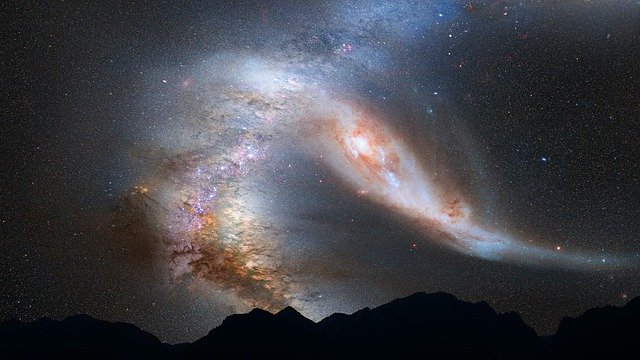A new theory to explain our expanding universe
A new theory of an expanding universe
Physicists know that our universe is expanding, but the question of exactly how fast this expansion is has proven deeply contentious in scientific circles. It has been suggested that we need to fundamentally alter our understanding of physics to deal with issues in measuring this speed, but a new approach may offer the answer. A hypothesis put forward by theoretical physicist Lucas Lombriser, from the University of Geneva, builds on previous research to suggest a ‘bubble’ that resolves several technical issues.
It’s been known for some time that the universe has been expanding ever since the Big Bang – the idea was first demonstrated by Edwin Hubble in 1929. He discovered that every galaxy is pulling away from us and that the most distant galaxies are moving the most quickly. This discovery implies that, at one time in the past, all galaxies were located at the same spot, and that time must have been the Big Bang. Research gave rise to the Hubble-Lemaitre law, including the Hubble constant (H0), which denotes the universe’s rate of expansion. The current best H0 estimate is approximately 70 Mpc (meaning that the universe is expanding 70 kilometres a second more quickly every 3.26 million light-years), but this measurement is complicated by a huge problem – there are two conflicting methods of calculation, which turn out different numbers.
Lombriser resolved this issue by suggesting that we are living in a local ‘Hubble bubble’
One method involves cosmic background radiation, and carefully measuring the sizes of hotter and colder spots in that light to conclude something about the shape of space and, consequently, the entire history of our universe’s expansion. Operating on the fact that the universe is homogeneous and isotropic (it is uniform in all directions), applying Einstein’s theory of general relativity produces an H0 value of 67.4. The second method involves observing the supernovae that appear sporadically in distant galaxies – they’re very bright and provide the observer with highly precise distances. With this knowledge, we can determine how quickly the galaxies are receding, producing a value for H0 of 74.
The issue for scientists is that astronomers expected both methods to give the same answer – a number that is called the Hubble Constant. The two values we have are different by about 10%, with a deviation that is statistically irreconcilable, leading to what has been termed ‘Hubble tension’. As Lombriser explains: “These two values carried on becoming more precise for many years while remaining different from each other. It didn’t take much to spark a scientific controversy and even to arouse the exciting hope that we were perhaps dealing with a ‘new physics’.”
Lombriser resolved this issue by suggesting that we are living in a local ‘Hubble bubble’, a huge area in space that is comparatively less dense than the rest of the universe. If this were true, it would have consequences on measuring the distances of supernovae and, thus, on determining H0. The only criterion is that the bubble needs to include all of the galaxy that serves as a reference for measuring distances. Lombriser proposed a diameter of 250 million light-years for this bubble and added that, if the density of the matter inside was 50% lower than the rest of the universe, we’d obtain a new value for H0 – this value would agree with the one obtained using cosmic background radiation.
Essentially, the discrepancies could stem from overestimating how dense our corner of the universe is in relation to the average cosmic density of matter. The nearby universe is indeed highly inhomogeneous – look at the difference in densities of particles in the ground or the atmosphere in both the Earth and the Moon. Just applying this on a larger scale could provide the answer to this long-standing physics mystery, bringing us ever closer to understanding how things get further away.

Comments